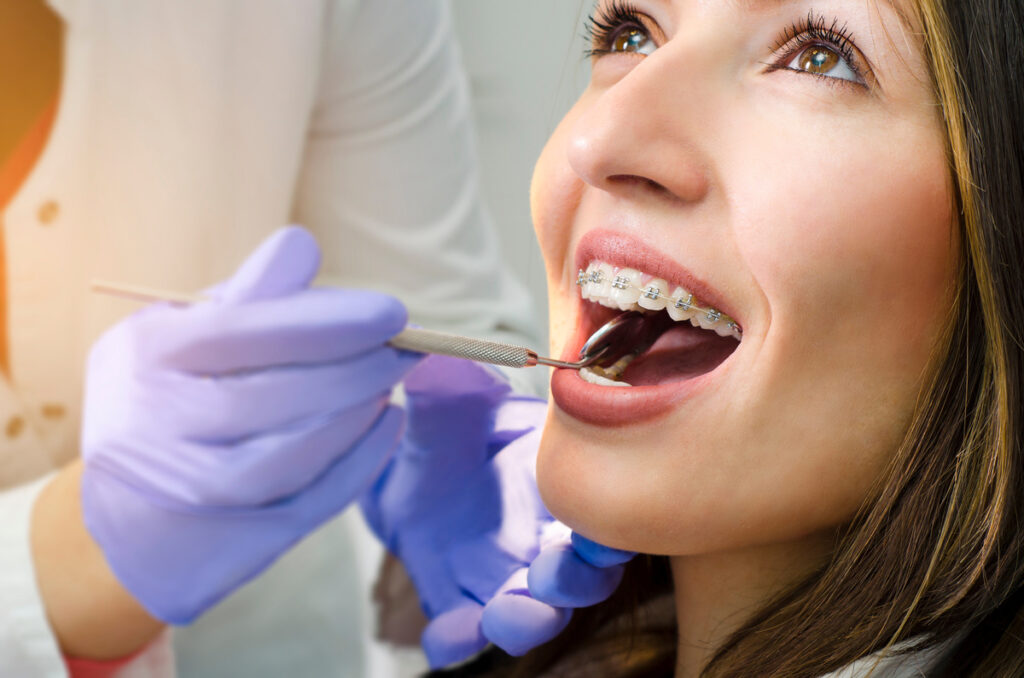Traditional orthodontics has long focused on moving teeth into straight lines, but what if there’s a better way? Modern airway expansion techniques are revolutionizing orthodontic care by addressing the root causes of dental problems rather than just treating the symptoms. This comprehensive approach considers your entire airway system, not just tooth alignment.
At Floss & Co., Dr. Murphy and Dr. Silva understand true orthodontic success means more than a beautiful smile. Our airway expansion treatments represent a fundamental shift from traditional methods, offering patients improved breathing, better sleep, and enhanced overall health alongside straighter teeth.
Traditional Orthodontics vs. Modern Airway Expansion
While traditional orthodontics have been tried and true for centuries, modern approaches differ in approach by addressing root causes of airway problems, creating space for better breathing, and providing more comprehensive health benefits. These approaches have their differences that can help you understand how modern techniques have transformed dental care.
Traditional Orthodontics
Traditional orthodontics operates on a relatively straightforward principle: move teeth into proper alignment within the existing jaw structure. This time-tested approach has helped millions achieve straighter smiles, but it often works within significant limitations. Brackets, wires, and elastics gradually shift teeth into predetermined positions over months or years. While effective for alignment, this approach doesn’t question whether there’s adequate space for all teeth to function optimally.
Traditional methods typically accept the current size and shape of your mouth as fixed parameters. When teeth don’t fit properly, the common solution involves extracting healthy teeth to create space for the remaining ones. This approach can achieve straight teeth but may compromise facial support and overall oral volume.
Modern Airway Expansion
Instead of simply rearranging teeth within existing space, airway expansion techniques create more room by expanding the upper jaw and improving the entire airway passage. These methods address the underlying developmental issues that cause breathing problems. Because orthodontic problems stem from underdeveloped jaws and restricted breathing passages, the American Association of Orthodontists recommends children see an orthodontist by age seven. Airway expansion can begin at this early age when the jaw is still developing.
Airway expansion offers benefits that extend far beyond straight teeth. Patients often experience improved sleep quality, reduced snoring, and better overall energy levels. The expanded airway allows for more efficient breathing, which can positively impact concentration, athletic performance, and general well-being.
What Are the Key Differences Between Traditional Orthodontics and Modern Airway Expansion Treatments
The distinctions between traditional orthodontics and airway expansion become clear when examining their fundamental approaches to common problems. The differences between these techniques include the following:
Space Management Philosophy
Traditional orthodontics views limited space as a constraint to work around, often requiring extractions to accommodate remaining teeth. Airway expansion addresses limited space as the primary issue to resolve, focusing on creating sufficient room for all teeth to function naturally.
Timing and Age Considerations
Traditional orthodontic treatment typically waits until all permanent teeth have erupted, usually around age 12 or later. Airway expansion can begin much earlier, sometimes as young as age six or seven, when the jaw is still developing and more responsive to expansion.
Early intervention with airway expansion capitalizes on natural growth patterns. The upper jaw consists of two separate bones that don’t fuse until the mid-teens, making expansion easier and more stable when performed at younger ages.
Treatment Duration and Comfort
Patients often find airway expansion more comfortable than traditional orthodontic approaches. The appliances used for expansion work with the body’s natural growth patterns, making the experience more comfortable overall. Many patients report feeling better, sleeping more soundly, and breathing more easily within weeks of beginning treatment.
Long-Term Outcomes and Stability
Traditional orthodontics that relies on extractions can sometimes lead to a flatter facial profile and reduced lip support, inadvertently restricting airway space. Airway expansion maintains or enhances facial volume by preserving all teeth and expanding the underlying bone structure. This difference can have profound implications for sleep quality, energy levels, and overall health throughout life.
Additionally, airway expansion often provides more stable results because it addresses the underlying causes of crowding rather than just managing symptoms. When teeth have adequate space and proper tongue posture is supported, the likelihood of relapse decreases significantly.
Learn More About Airway-Focused Orthodontics at Floss & Co.
Understanding the differences between different orthodontic approaches helps you make informed decisions about your orthodontic care. While traditional orthodontics remains valuable for certain cases, airway expansion offers a more comprehensive approach to oral health and overall well-being. At Floss & Co., Dr. Murphy and Dr. Silva combine the best of both approaches, using airway expansion techniques when appropriate while incorporating traditional methods as needed.
Our team recognizes successful orthodontic treatment should improve your ability to breathe, sleep, and function optimally in addition to your smile’s appearance. When you choose our practice, you’re selecting a team that recognizes the profound connection between optimal airway function and overall well-being. To learn more about how modern airway expansion can benefit you or your child, call us at (773) 586-5522 or contact our office to schedule a consultation.

